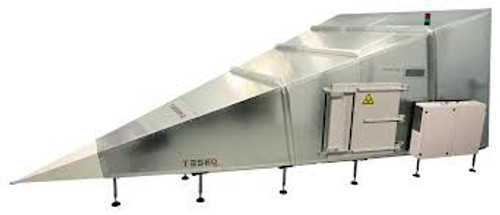Overview
A GTEM (Gigahertz Transverse Electro Magnetic) cell is a test site for efficiently performing both radiated immunity and emissions testing in a single, controllable and shielded environment. Compared to other test sites, GTEM testing is faster with high accuracy and excellent reproducibility.
In principle, the GTEM cell is a coaxial line expanding pyramidally and having an impedance of 50 Ω. At its end, the line is terminated by a combination of termination resistors and RF absorbers designed and constructed to match the above mentioned impedance.
Teseq offers with GTEM 250-SAE a cell with excellent VSWR for improved testing in the entire frequency.
Specifications of the Teseq GTEM 250-SAE:
| Parameter | Value |
|---|---|
| Max. septum height | 250 mm |
| Septum height at marker position | 217 mm |
| Dimension (LxWxH) | 1.25 x 0.65 x 0.45 m |
| Weight | 45 kg |
Emissions measurements:
The standards SAE J1752/3 and IEC 61967-2 define a method for measuring the electromagnetic radiation from an IC (integrated circuit) in the frequency range 150 kHz to 1 GHz. The IC itself is mounted on a shielded test board that is clamped to a special hole in the top of the TEM cell. Except for the IC, all the interface wiring and other required components are placed on the outside of the test board which becomes part of the cell wall. A spectrum analyzer or measurement receiver is connected to the GTEM and measures the RF emissions from the integrated circuit.
Immunity testing:
The test board described above can also be used for IC immunity testing with a GTEM cell. The standard IEC 62132-2 specifies the immunity test method for integrated circuits in the frequency range 150 kHz to 1 GHz.







